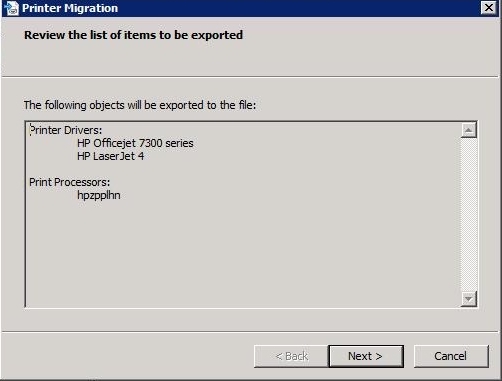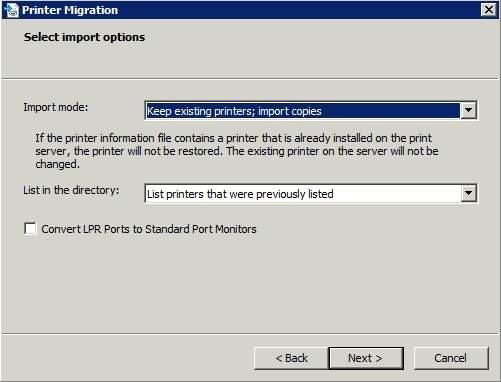Managing printers in Windows Server 2008 - Part 2
 Managing printers in Windows Server 2008 - Part 1
Managing printers in Windows Server 2008 - Part 1
In the previous part of this article series, I showed you how to install the printer management interface Print Management console. In this section, I will continue the discussion by showing you how to transfer other network print servers to another network print server you created.
Switch Network Printer
Once you have a print management server for your business, you will definitely want to merge some other print servers. The integration will allow you to run all the printers in the network through a network print server, thus reducing the number of print server maintenance tasks that administrators need to perform.
To merge network print servers, open the Print Management console by selecting the Print Management command from the Server's Administrative Tools. When the interface appears, click the Print Servers item and select the print server you want to transfer. Right-click on this print server, then select the Export Printers to a File command from the menu that appears.
Here, Windows will launch the Printer Migration Wizard. The initial screen of the wizard will show you the printer's drivers and processor will be exported, as shown in Figure A.

Figure A: The Printer Migration Wizard will list the printer driver and processor to be exported.
Click Next , and you will receive a prompt to specify the path and file name to which you want to export printer information. Enter this information in the location provided, then click Next again. The wizard will now export the printer information to a pre-designed file. When the process is complete, the wizard will notify you of any errors that appear, it will also let you observe the entries that have been written to the system event log. Click the Finish button to complete the process.
The rest of the migration process is completely simple. Just open the Print Servers section, then select the print server you want to import other printers into. Right-click on the print server and select the Import Printers From A File option from the menu that appears. After doing this, Windows will launch the Printer Migration wizard.
Enter the path and file name of the export file you created, then click the Next button. You will then see a list of printer drivers and processors that will be imported.
Click Next , and you will see a screen like the one shown below. As you can see in the figure, you must tell Windows what to do if one of the printers is being imported in the same way as the existing printer. You also need to tell Windows if you want new printers to be listed in Active Directory. Click Next , and Windows will import the printers. When the wizard is complete, you will see the printers you have imported listed below the currently selected print server.

Figure B: You must tell Windows how to handle conflicts
Some issues to consider
The biggest problem to consider when it comes to transferring printers is the Print Management console that can transfer printers from any Windows print server. You are not limited to transferring your printers to the Windows Server 2008 print server. However, it should be noted that there are certain limitations in the way it is implemented. For example, you cannot transfer a 64-bit printer driver cluster to a Windows 2000 server and expect them to work.
Another limitation is that if you want to transfer custom forms or profiles, they can only be imported into the internal print server. For some reason, Windows does not support exporting them to other print servers.
One final advice is that Windows Server 2008 provides a command line tool called PrintBRM.exe . With this tool, some administrators can use the Windows task scheduler to schedule the utility to export the printer's information in a certain cycle, like how to backup a print server.
Conclude
In this section, I have shown you how to transfer the print queue from a print server to another print server. In Part 3 of this series, I will show you how to use policy settings to manage network printers.
You should read it
- Managing printers in Windows Server 2008 - Part 3
- Failover Cluster Management configuration of Server 2008
- Remote computer management in Windows Server 2008 R2
- Install Windows Server Backup on Windows Server 2008 R2
- 10 tips with PowerShell in Windows Server 2008 - Part 1
- 10 reasons to install Windows Server 2008
 Managing printers in Windows Server 2008 - Part 3
Managing printers in Windows Server 2008 - Part 3 10 software that strengthens the printer
10 software that strengthens the printer Install the printer using Group Policy Object
Install the printer using Group Policy Object Network setup for PC and Mac
Network setup for PC and Mac Install the printer in a mixed Windows environment
Install the printer in a mixed Windows environment Answer about ink
Answer about ink